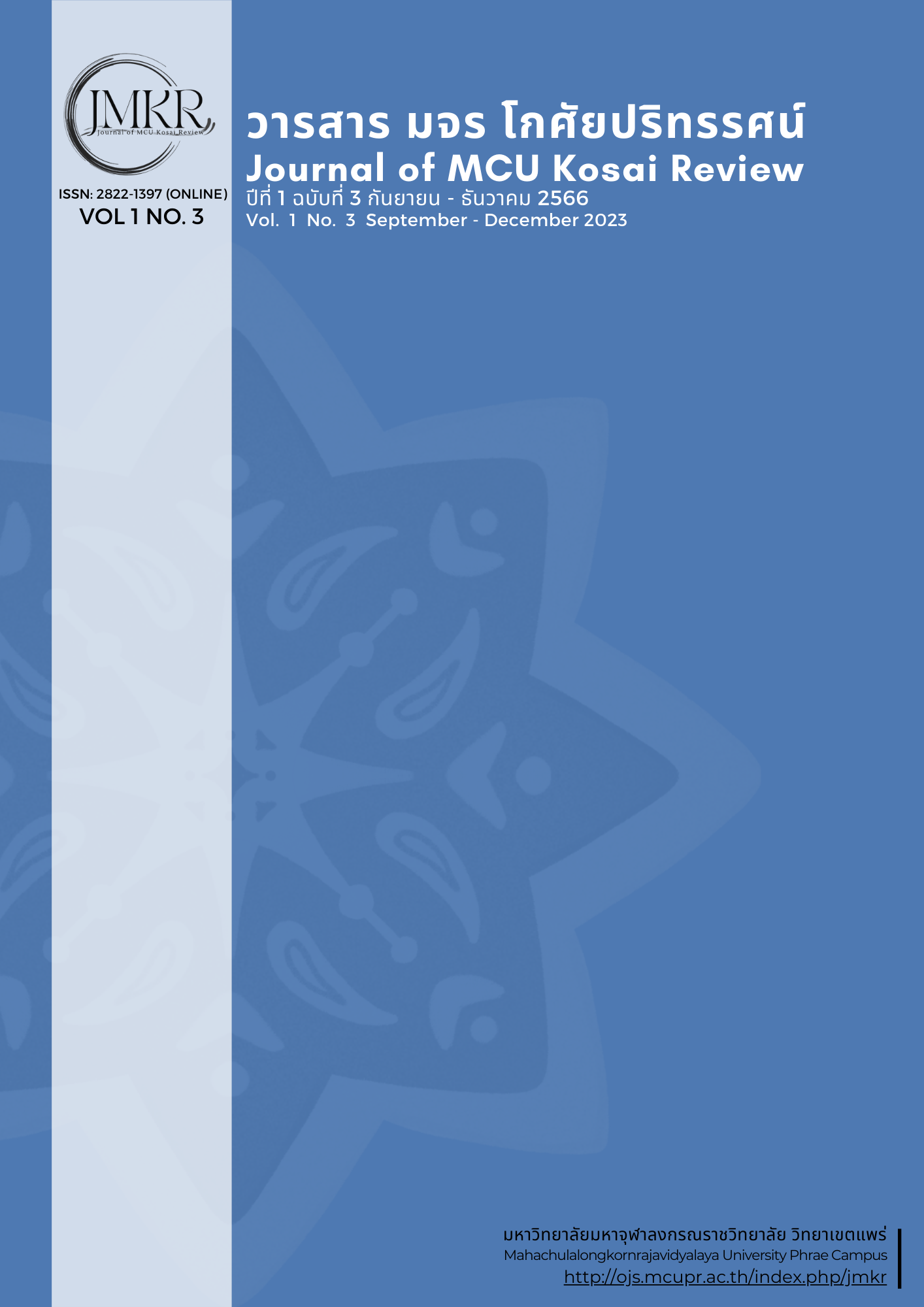An Adaptation to The New Normality of Monks in Theravada Buddhism
Keywords:
The new normal, adaptation, form, monastic reignAbstract
The article presents the study results from the research. "An adaptation to the new normal of monks in Theravada Buddhism" with the objective 1. to study the doctrine and discipline on the self-reign of monks in Theravada Buddhism 2. to study the concept and pattern of the monks' adaptation to the new normal in Theravada Buddhism and 3. to propose guidelines for adapting to the new normal of monks in society. It is a documentary Research.
The research Finding
- The reign of the monks in order to approach a new way of life in order to be safe from the spread of the COVID-19 virus, along with efforts to cure and adjust the concept, vision, management method, as well as behavior in terms of food, dress, and hygiene Education and communication—these new things have become the new normal. Until eventually, over time, it will become familiar to the point that it becomes part of the normal way of life of people in society. In the reign of the monks in the past, the monks lived in a simple way according to the traditional customs, which have a strict form, and followed the practice of the teachers at the same time in the present. Most of the monks have to follow the monastic observances and activities, then study. This makes the monks have more responsibilities than in the past, have social responsibilities, and contribute to society. These are the roles of monks today.
- To maintain the status of a monk is called the reign of being in a monk's body. By adopting the principles of the Pārajika 4 as the framework for self-dominance, the first and foremost being the conduct of the celibacy to be pure and complete throughout life to alleviate desire not for lust by refraining from drug use and refraining from taking things that the owner has not given even if only assets equal to five or more and the deprivation of the human body or the killing of others and boasting of Uttarimanusadhamma by mentioning things that are not true which is a parachute is the Pārajika 4 that the Buddha prescribes. If any monk trespasses, they will immediately be disqualified from being a monk.
- Living according to the Bhāvanā 4 principles in Buddhism is of great value and benefit. can be applied in real life and able to lead a life that is both a right way of life and a right practice for the peace of the world and society as a whole, including the importance of nature and the environment in which we live. This is to promote and develop human beings with goodness, beauty, knowledge of body, mind, and wisdom. Until being free from all suffering properly and with a good plan can be a guideline for further practice.
References
จำนงค์ ทองประเสริฐ, (2539). พุทธศาสนากับสังคมและการเมือง. พิมพ์ครั้งที่ 2. กรุงเทพมหานคร: บริษัทต้นอ้อแกรมมี่จำกัด.
ธีรโชติ เกิดแก้ว. (2536). “การปรับตัวและการร่วมมือกันในสถานการณ์โควิด-19 ตามแนวพุทธศาสน์”. วารสาร บัณฑิตศึกษาปริทรรศน์.
ประพัฒน์ ศรีกูลกิจ. (2559). พระไตรปิฎกวิเคราะห์ฉบับปรับปรุง. พิมพ์ครั้งที่ 5. พิษณุโลก : บริษัทโฟกัส ปริ้นตริ้ง จำกัด.
พระครูปลัดสุวัฒน์ สุวฑฺฒโน และพระปัญญารัตนากร, (2563). “การดำเนินชีวิตตามหลักพุทธธรรมในยุคโควิด 19”. วารสารสหวิทยาการมนุษยศาสตร์และสังคมศาสตร์.
พระครูวรดิตถ์ธรรมาภรณ์ และคณะ. “แนวทางการปรับตัวการบริโภคปัจจัย 4 ของพระสงฆ์เขตอำเภอเมืองมหาสารคาม จังหวัดมหาสารคาม”. Journal of Modern Learning Development.
มหาจุฬาลงกรณราชวิทยาลัย. (2539). พระไตรปิฎกภาษาไทย ฉบับมหาจุฬาลงกรณราชวิทยาลัย. กรุงเทพมหานคร : โรงพิมพ์มหาจุฬาลงกรณราชวิทยาลัย.




